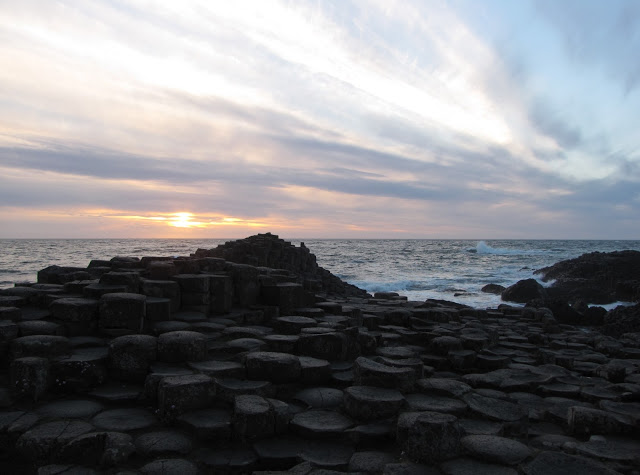
For our last stop of the day, we made our way from Monasterboice, over the invisible border to Northern Island, through Belfast, and along the island’s northern coast. Thanks to the M-1, we reached our destination well before nightfall.Giant’s Causeway, a natural formation of thousands of basalt, mostly hexagonal columns along the Antrim Coast, is one of Ireland’s three UNESCO World Heritage sites and the only one located in Northern Ireland. It must be reached on foot, but the walk is a pleasant and brief half-mile or so from the parking lot.
Giant’s Causeway consists of three peninsular outcroppings of increasing size which are appropriately dubbed the Little, Middle, and Grand Causeways. Woven into and around the site are still more evocatively named natural features, including Aird’s snout, the Wishing Chair, the Organ, Chimney Stacks, and Giant’s Gate.
According to legend, the causeway was constructed by the Irish warrior and giant, Finn MacCool, so that he could combat his Scottish counterpart, Benandonner. However, upon discovering that Benandonner far surpassed him in size and strength, MacCool retreated to his home where he disguised himself as a baby. When Benandonner crossed the causeway, he found only the Irish giant’s wife and what appeared to be their very large offspring. Thinking that the father of such a child must be enormous, Benandonner retreated back to his homeland. A slightly different version of the myth is also the subject of the opening sequence of Matthew Barney’s Cremaster 3 (2002).
In reality, the closely packed, nearly uniform columns were formed around 60 million years ago when Tholeiitic basalt lava cooled, shrank, and cracked into polygonal shapes beneath the ground’s surface. Much later, at the end of the Ice Age, sea ice eroded away the upper layers of earth to reveal the rock formations beneath.


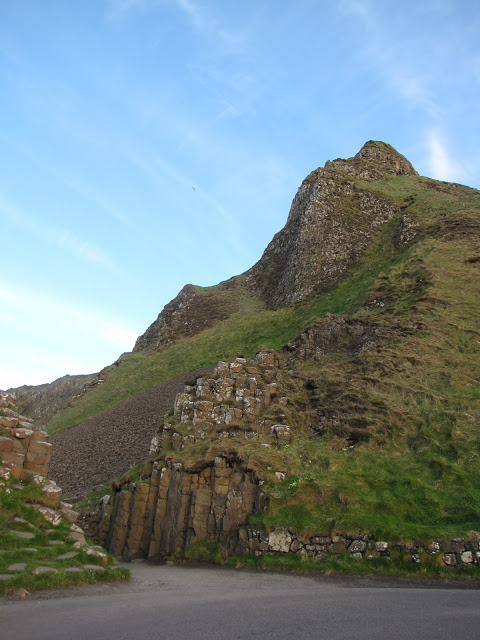

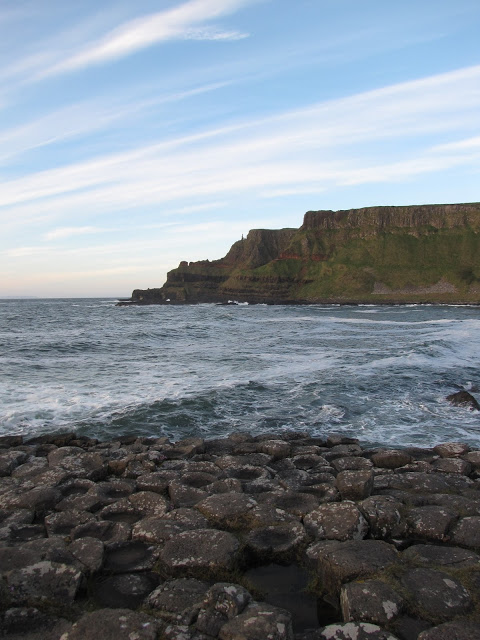


All photos by Renée DeVoe Mertz, May 24, 2013, unless otherwise stated.


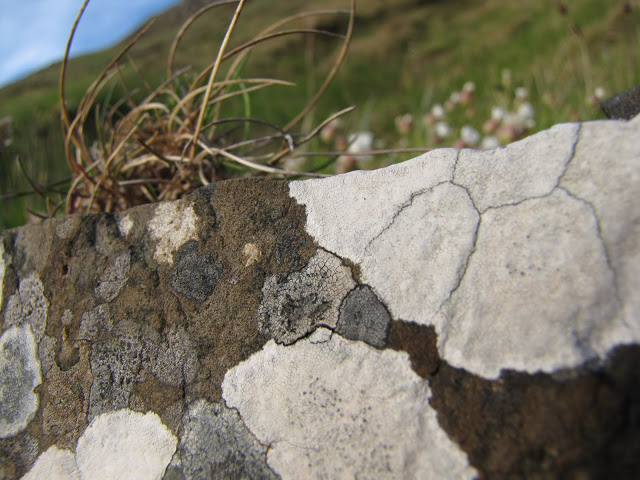

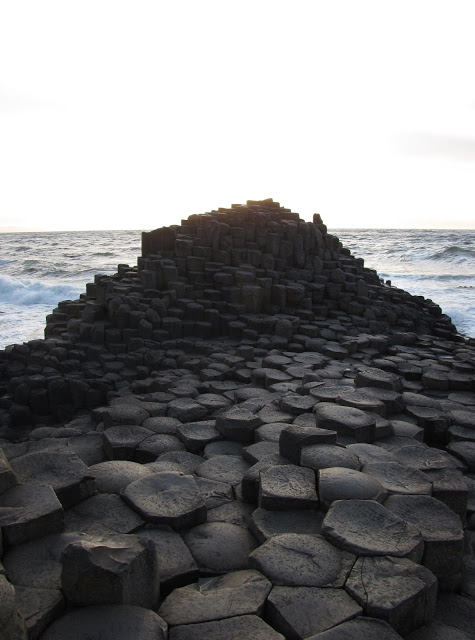
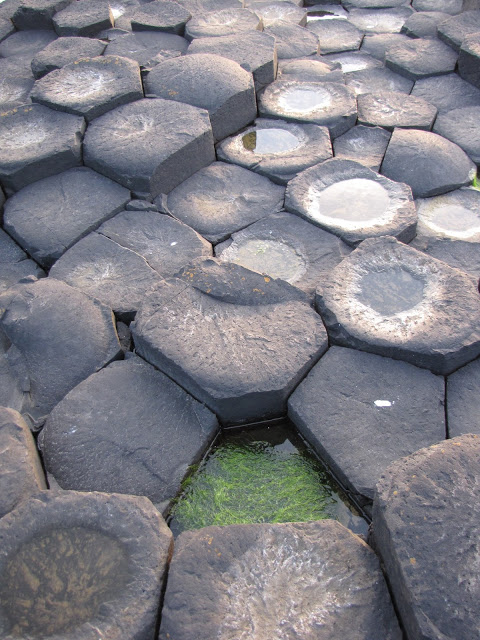
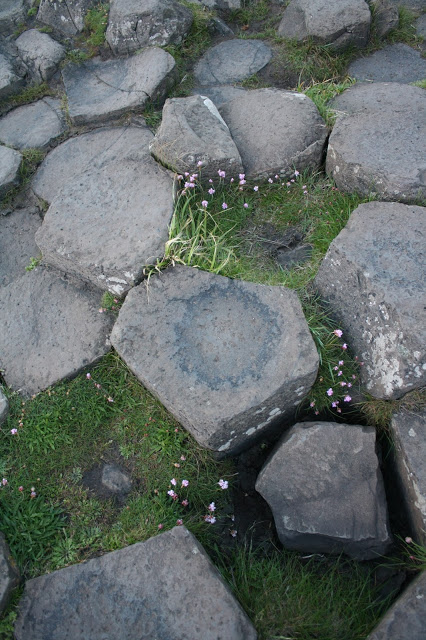
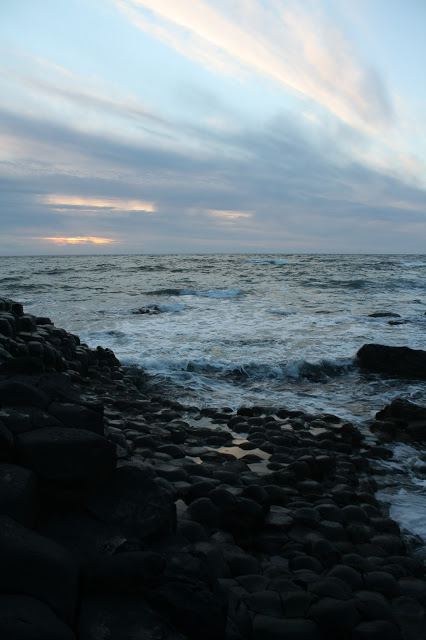
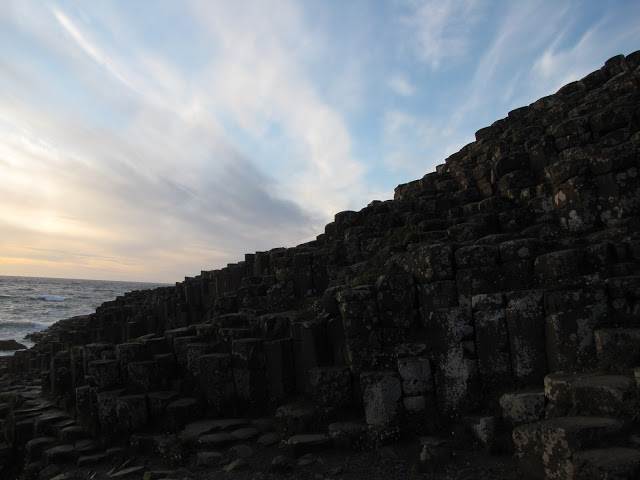

These are beautiful pics! Looking to go here this summer! 🙂
Thank you! I hope you enjoy your trip!